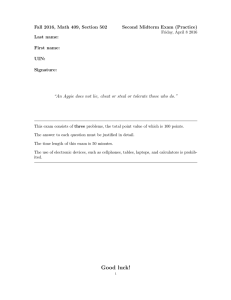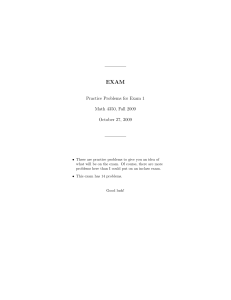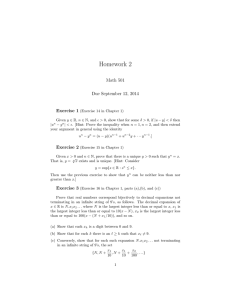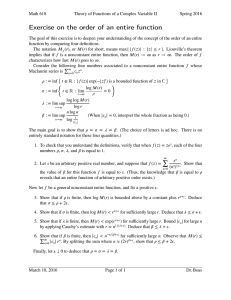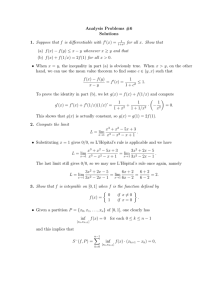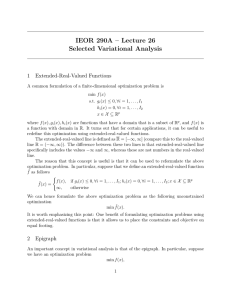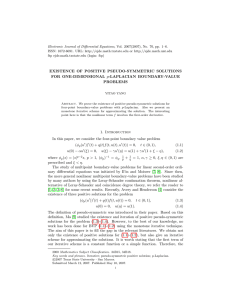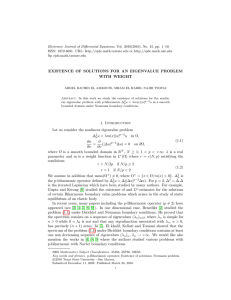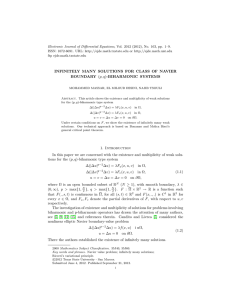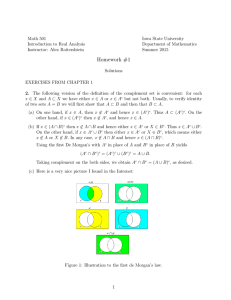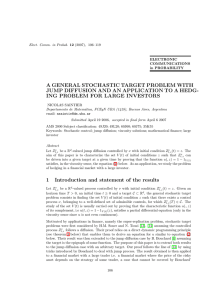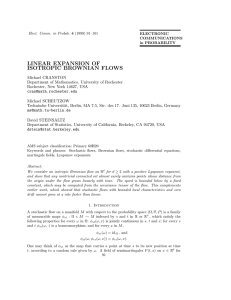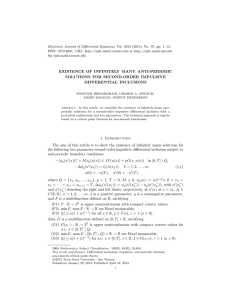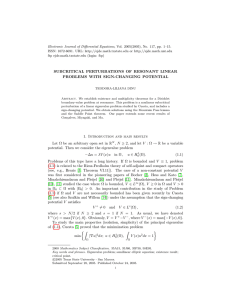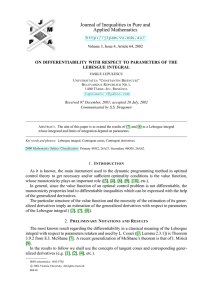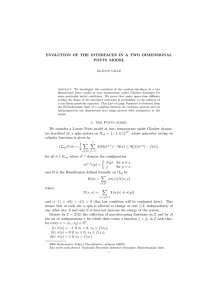Math 3410 - Intro to Analysis - MathOnline
advertisement
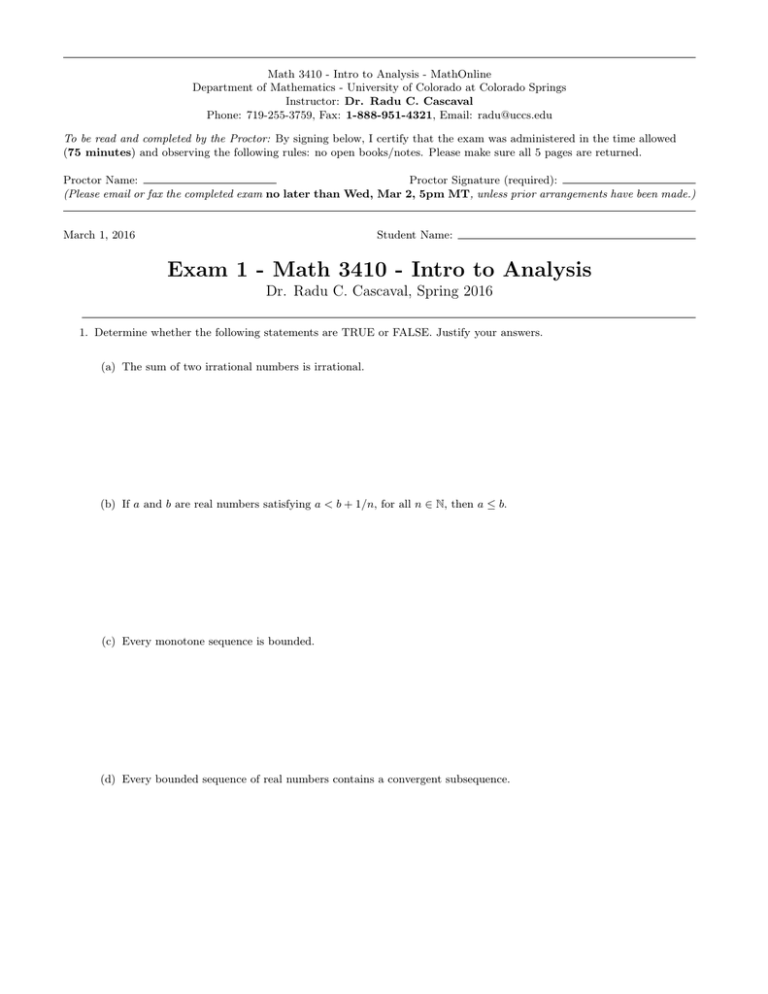
Math 3410 - Intro to Analysis - MathOnline
Department of Mathematics - University of Colorado at Colorado Springs
Instructor: Dr. Radu C. Cascaval
Phone: 719-255-3759, Fax: 1-888-951-4321, Email: radu@uccs.edu
To be read and completed by the Proctor: By signing below, I certify that the exam was administered in the time allowed
(75 minutes) and observing the following rules: no open books/notes. Please make sure all 5 pages are returned.
Proctor Name:
Proctor Signature (required):
(Please email or fax the completed exam no later than Wed, Mar 2, 5pm MT, unless prior arrangements have been made.)
March 1, 2016
Student Name:
Exam 1 - Math 3410 - Intro to Analysis
Dr. Radu C. Cascaval, Spring 2016
1. Determine whether the following statements are TRUE or FALSE. Justify your answers.
(a) The sum of two irrational numbers is irrational.
(b) If a and b are real numbers satisfying a < b + 1/n, for all n ∈ N, then a ≤ b.
(c) Every monotone sequence is bounded.
(d) Every bounded sequence of real numbers contains a convergent subsequence.
(e) For any sequence of real numbers, lim inf sn and lim sup sn always exist and, furthermore, lim inf sn ≤ lim sup sn .
(f) If lim inf sn = +∞ then lim sn = +∞.
2. (a) Given b > 0, show by mathematical induction that (1 + b)n > 1 + nb, for all n > 1.
(b) Using (a), prove that lim rn = +∞ for r > 1.
n→∞
3. Compute the following limit
lim
n→∞ n2
n2 − 3n
=
+ (−1)n (tan−1 n + n)
4. Let (sn ) be defined by s1 = 2 and
sn+1 = 2 −
1
, for all n ∈ N.
sn
(a) Compute the first 4 terms of the sequence.
(b) Show that the sequence (sn ) is bounded below by 1.
(c) Prove that (sn ) is convergent and find limn sn .
5. Given S and T , two nonempty bounded sets of real numbers, consider their union S ∪ T and intersection S ∩ T .
(a) Prove that sup(S ∪ T ) = max{sup S, sup T }.
(b) Derive (and briefly justify) the similar formula for inf(S ∪ T ) =
(b) Is there a similar formula for sup(S ∩ T ) in general?
6. (a) State the Completeness Axiom for R..
(b) Using the Completeness Axiom, prove the Nested Interval Property: For a sequence of intervals In = [an , bn ]
satisfying an ≤ an+1 ≤ bn+1 ≤ bn for all n, that is
I1 ⊇ I2 ⊇ . . . ⊇ In ⊇ In+1 ⊇ . . .
there exists at least one real number in the intersection of all these intervals, that is
∪∞
n=1 In 6= ∅
(c) Using (b), prove that every real number in [0, 1] can be obtained as the limit of a sequence of rational numbers of
the form 2mk , k ∈ N, m = 0, 1, . . . 2k − 1.
[Hint: Start with the interval I0 = [0, 1], then pick I1 to be either [0, 21 ] or [ 12 , 1], whichever contains the real number in
question. Repeat the process.]
